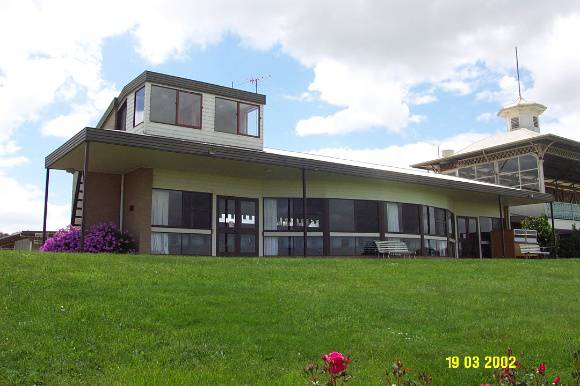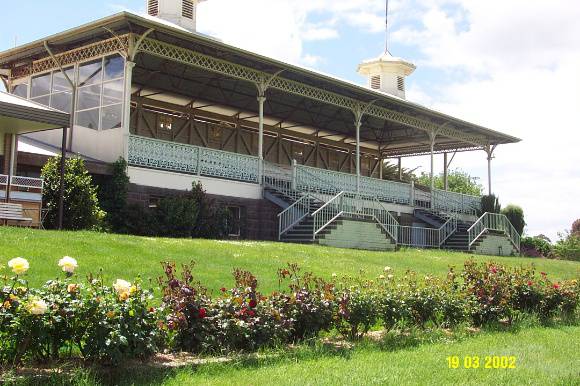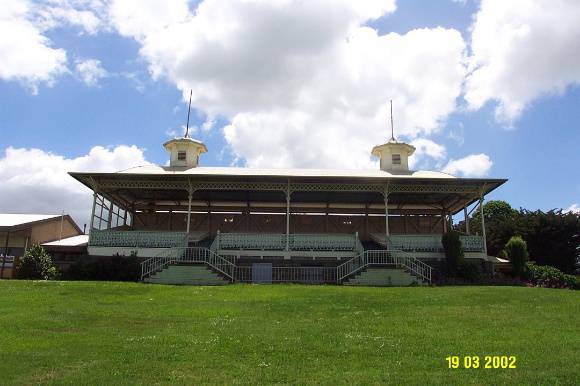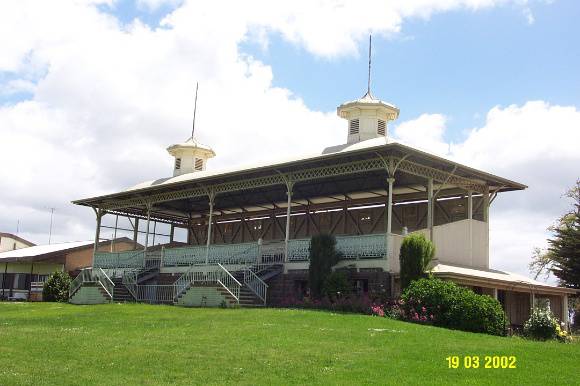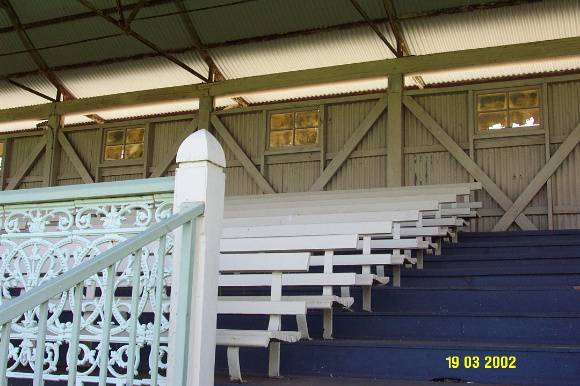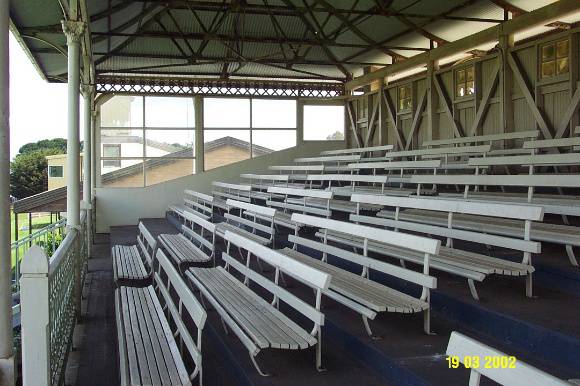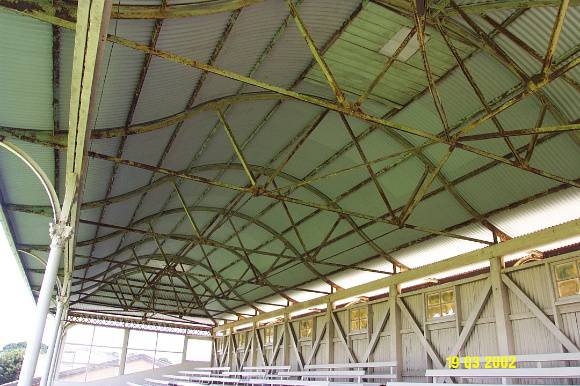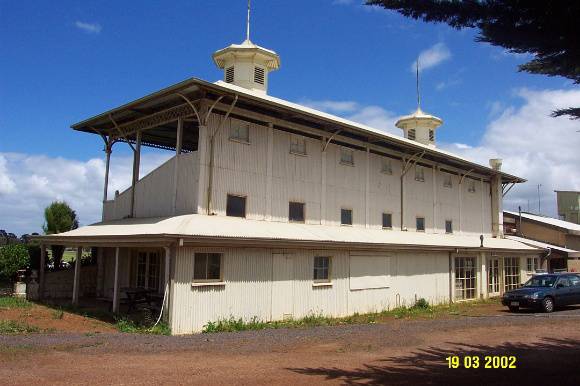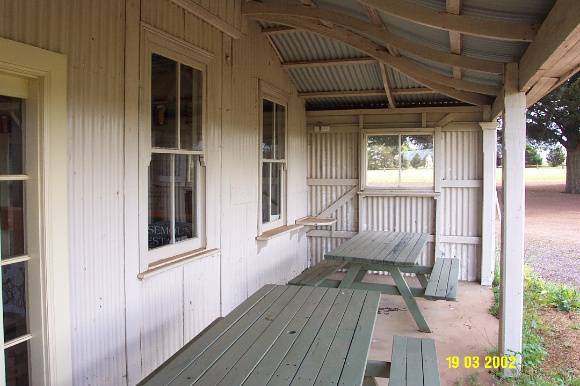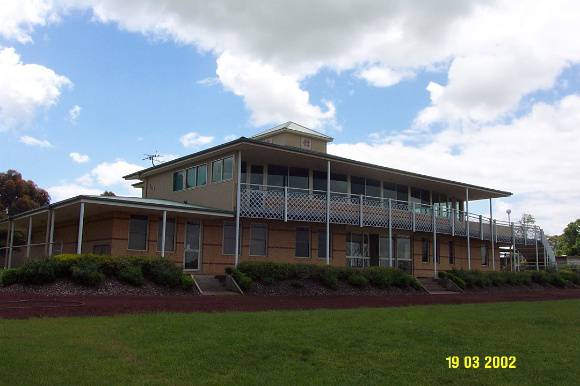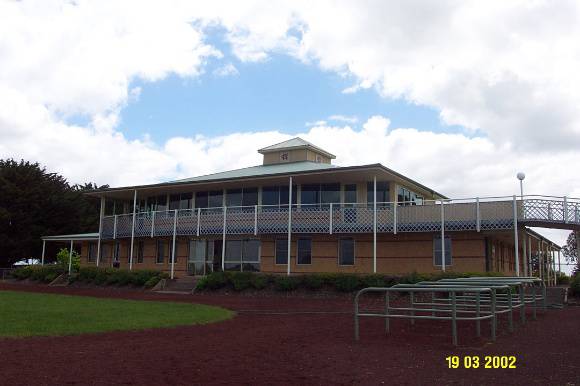| Back to search results » | Back to search page » |
|
HAMILTON RACECOURSE
Statement of Significance
What is significant?
The Hamilton Racecourse complex, located on the west side of the Henty Highway about 4.0kms north-west of the centre of Hamilton, dates from 1859 when the land, then known as Kippen's flat, was made available. In the following year, the Hamilton Turf Club was formed. The land, comprising 120 acres, was permanently reserved in 1864. The first Grand National Steeplechase was held in 1866, starting and finishing at the course but passing through adjacent farms on the way. This was a year before the Great Western Steeplechase began at Coleraine in which the famous horsemen, Adam Lindsay Gordon and Cuthbert Fetherstonhaugh would ride. The Turf Club went into financial decline at the end of 1866, but revived in 1867 as the Western Racing Club. Its committee contained a mixture of pastoralists and leading townsmen, a convention continued during later amalgamations and re-constitutions of the local racing clubs. In 1873, the club built the impressive large timber and iron grandstand. The architect and builder are not known but the combined elegance of its design and novelty of its construction are notable for such an early date and indicate very competent professional involvement. The structure remains substantially intact and in good condition. It can be contrasted with the new grandstand built more than 120 years later, which was designed by the notable Hamilton architect, Frank Punch. The other usual racing facilities support the two grandstands, the whole complex being located within grounds landscaped traditionally.
How is it significant?
The Hamilton Racecourse complex is of historical, social and architectural significance for the city of Hamilton, the southern Grampians Shire and for the State of Victoria.
Why is it significant?
The Hamilton Racecourse complex is of historical significance for its association with the early history of horse racing in Victoria. It has further historical significance for its continuous association with the thoroughbred horse racing industry over 100 years. It has social significance as the provision of substantial facilities for mass public entertainment, bridging the gaps between town and country, rich and poor. The two grandstands are of architectural significance; the older as one of the earliest surviving large grandstands in Victoria, all the more significant for the sophisticated elegance of its design achieved through its novel construction; the newer for providing a contrast in its modern facilities. It is also of interest as an example of the Hamilton architect, Frank Punch.
Group
Recreation and Entertainment
Category
Racecourse


